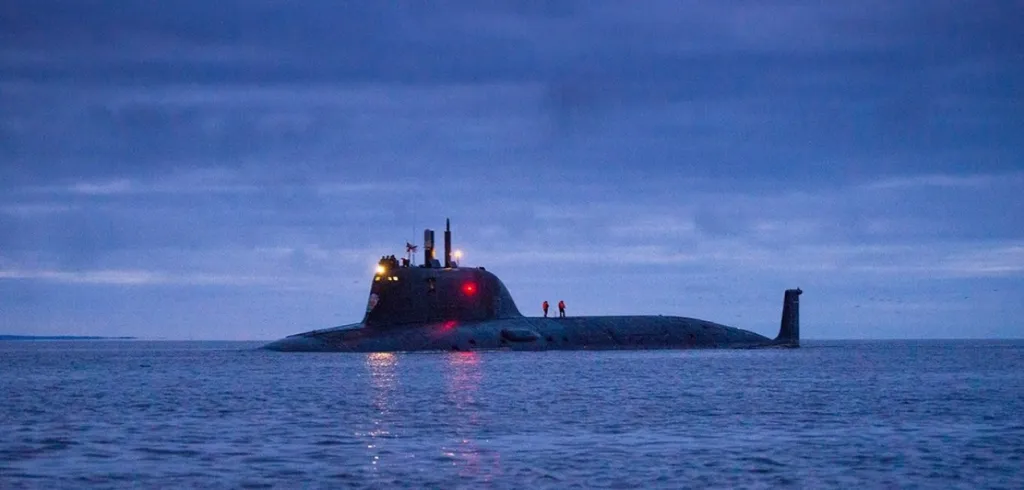In a scene reminiscent of the cat-and-mouse games between US and Soviet submarines during the peak of the Cold War, a US submarine surfaced at Guantanamo Bay just one day after a Russian nuclear submarine docked in Cuba. According to the US Navy, this was part of a routine mission.
The US nuclear-powered submarine USS Helena arrived at the US base in Cuba a day after a Russian Navy flotilla, consisting of a frigate, a nuclear-powered submarine, an oil tanker, and a rescue tug, reached Havana Bay for maritime drills. The arrival was described as a “routine port visit” by the US Southern Command.
This visit followed the blatant shadowing of the Russian flotilla by warships deployed by the US Navy and the Royal Canadian Navy, along with a submarine hunter P-8 flying overhead in order to track any Russian submarines.
The Russian nuclear submarine Kazan’s visit to Cuba comes 62 years after the Cuban Missile Crisis. The Russian flotilla, led by the frigate Admiral Gorshkov equipped with Zircon hypersonic missiles, was monitored by NATO air and surface assets from Norway to Cuba.
The submarines
The USS Helena was commissioned in 1986 and is a Los Angeles class nuclear powered fast attack submarine in service to the US Navy currently. Known for their versatility, stealth, and multi-role capabilities, Los Angeles-class submarines excel in anti-submarine warfare, intelligence gathering, and strike missions. The USS Helena is equipped with torpedoes and Tomahawk land-attack cruise missiles.
Both the USS Helena and the Russian Kazan are significant military assets, but their roles and capabilities differ. The Russian Kazan class submarine specializes in cruise missile capabilities while the USS Helena is an attack submarine. The Russian Kazan has caused concern among US and Western militaries due to its stealth and strike capabilities, being armed for attacks against both land and sea targets.
The deployment of Russian and US nuclear submarines in close proximity is expected to increase in the future. In response to questions from Senator Joni Ernst (R-Iowa) about the threat posed by Chinese and Russian cruise missile submarines operating near the US mainland, VanHerc noted that Russia has kept on deploying its Yasen-class nuclear attack submarines at a greater frequency compared to previous years.
A dangerous game
For decades during the Cold War, submarines from the two arch-nemeses played a similar dangerous game of cat and mouse, occasionally resulting in collisions between these undersea giants.
It was routine for American “pursuit” submarines to shadow Soviet submarines during long deployments. Over time, the Americans identified a “blind spot” in Soviet submarines’ sonar capabilities, located just behind them, obscured by the noise of their propellers. American submarines would follow closely in this blind spot to avoid detection.
To detect any pursuing submarines, Soviet submariners would abruptly change course or turn 120-150 degrees to port or starboard, a maneuver known as ‘Crazy Ivan’. During one maneuver similar to the ones described in the Arctic Ocean on June 20, 1970, the Soviet submarine K-108 (Project 675) impacted the following USS Tautog.
The Soviet submarine was damaged heavily and was unable to stop its descent, however a tugboat managed to reach it and managed to bring it back to base. The Soviet vessel had a wedged starboard propeller, while the American submarine sustained external damage but managed to return home without casualties.
A year earlier, in November 1969, the American nuclear submarine USS Gato was testing its latest radio interception equipment in the Barents Sea, within Soviet territorial waters, when it collided with the Soviet nuclear-powered submarine K-19, a ballistic missile carrier.
